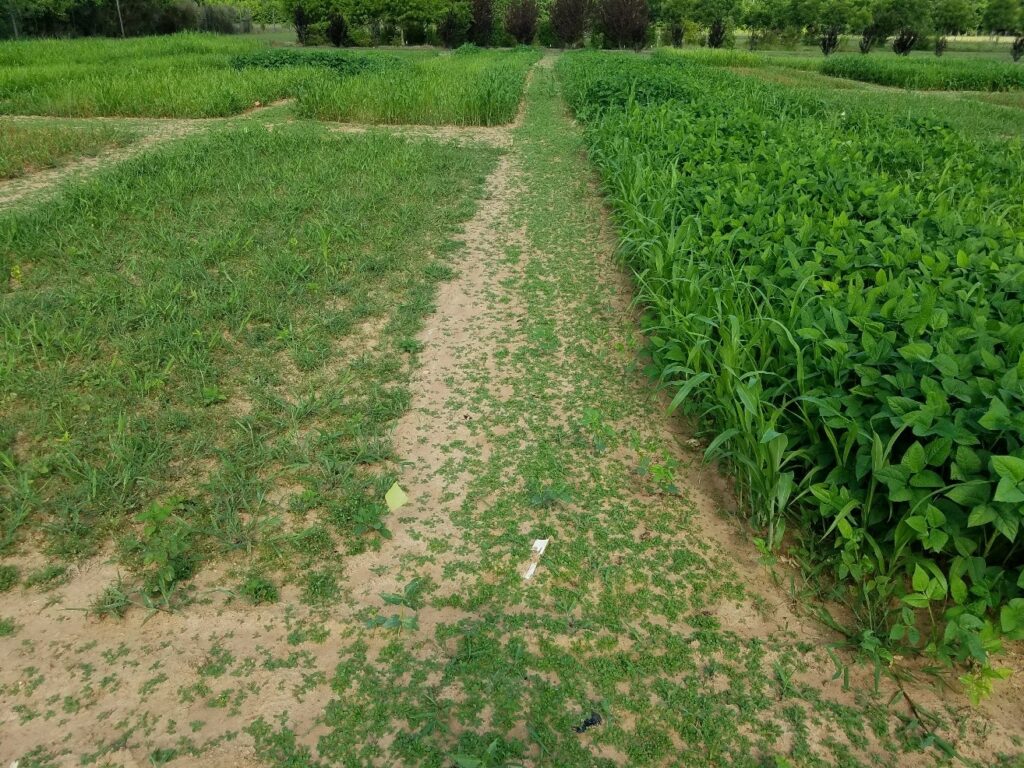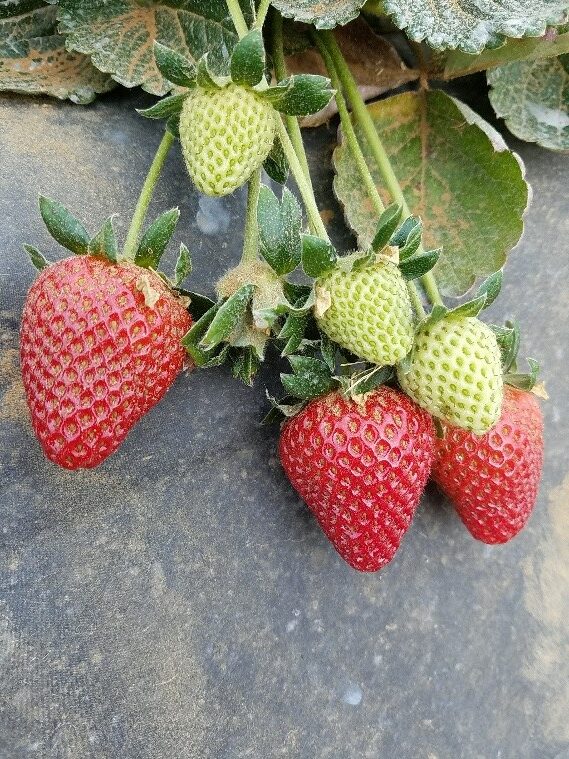Amanda McWhirt, Horticulture Production Specialist, and Aaron Cato, Horticulture IPM Specialist, University of Arkansas System Division of Agriculture
Small scale strawberry producers in the Mid-south do not rely on soil fumigation to the same extent that is common in larger scale production in the Southeast. Many of these growers prioritize short (one to three year) crop rotation strategies for mitigating soil borne disease. However, little research exists to quantify the utility and impact of crop rotation on strawberry crop health and plant productivity over extended periods for Southeastern US plasticulture strawberry production. Additionally, the use of summer cover crops has been shown to provide nutrient inputs and have been used effectively in strawberry crop rotation (Beck et al., 2016; Garland et al., 2011; McWhirt 2016). Anecdotally, growers using a system of yearly crop rotation experience lower incidences of soilborne disease and plant loss. However, the true economic value of crop rotation is not clear within non-fumigated plasticulture strawberry production systems.

Side-by-side comparisons of sustainable practices and conventional practices in North Carolina found that compost and summer cover-crops can be substitutes for conventional fumigation practices (McWhirt, 2016). However, the investigation of long-term crop rotation combined with other soil building practices has not been investigated for non-fumigated plasticulture strawberry production systems.
To this end, a long-term trial was initiated at the University of Arkansas Vegetable Research Station in Kibler, Arkansas, in the summer of 2022. As of this writing in May 2025, the trial is finishing its third year.
The trial is a strip-split-plot randomized complete block design (RCBD) with crop rotation (crop rotation [3-year] or no-crop rotation [continuous]) as the strip, and the split is subplots of summer soil management treatments (cover crop [cowpea (100lb/ac) and pearl millet (10lbs)] or summer fallow). The summer cover crop is established in June of each year and terminated in August of the same year. All plots are unfumigated. Standard pre-plant fertility applications and plasticulture beds are laid in August, followed by strawberry crop establishment in September. Each crop rotation x summer soil management treatment has three replicate plots consisting of 30 strawberry plants each. The strawberry variety used in this trial is ‘Camino Real’. Strawberry plant biomass and plant mortality are assessed across all treatments. In the spring, strawberry yield is measured on a bi-weekly basis and fruit flavor parameters (Brix and pH) are measured at three points throughout the season.

Data were analyzed in JMP v. 18.2 (SAS Institute Inc., Cary NC) using mean square separation tests. At the end of the 5-year project an economic analysis is planned of the impact of crop rotation and summer cover crop use in non-fumigated plasticulture strawberry production.
Preliminary Results
Preliminary results from our trials indicate a benefit of crop rotation in non-fumigated plasticulture strawberry production in the Southeast in some years. In 2023, the first year of our trial, there was a small benefit of planting a summer cover crop to precede the strawberry crop on increasing spring yields. In 2024, which was the second year of our trial, and the first harvest season of back-to-back strawberry production, we observed lower yields (20% reduction) when crop rotation was not used. In that year, our average marketable yield with crop rotation was 1.04 lb per plant and 0.84 lb per plant without crop rotation. This yield difference may in part be explained by observed larger fruit size with crop rotation. In 2024, there was no statistical effect of summer cover crop on yields, but plants in the crop rotation with summer cover crop treatment had yields that were numerically 0.10 lb/plant greater than those in the crop rotation without summer cover crop treatment. This equates to an additional 1,550 lb/ac of yield.
However, in 2025 (third year), there was no impact of crop rotation or cover crop usage on yields or fruit size. Additional years of data are needed to verify these results.
Our Recommendation
Based on our initial results, here is what we recommend:
When soil fumigation is not used, planting a cowpea + millet summer cover crop and crop rotation may be justified for Southeastern strawberry growers who have space to rotate. Crop rotation is an established practice shown to reduce disease pressure, and our data show that it can possibly increase strawberry fruit yields. Additionally, summer cover crops have shown occasional positive impacts on strawberry fruit yields, and the cowpea mix provides nitrogen at a rate that is equivalent to about half of what is typically applied before planting.
Late May to early June is the ideal time to establish summer cover crops for rotation before the next strawberry crop. A combination of 100 lb/ac of cowpea and 10 lb/ac of pearl millet reliably produces a good stand of biomass when broadcast seeded. If a drill is available, these seeding rates can be reduced by 30%.
Download more information:
Impacts of crop rotation, summer cover crop use, and their interaction will continue to be investigated in this trial through the 2027 harvest season, and we will report back with additional results.